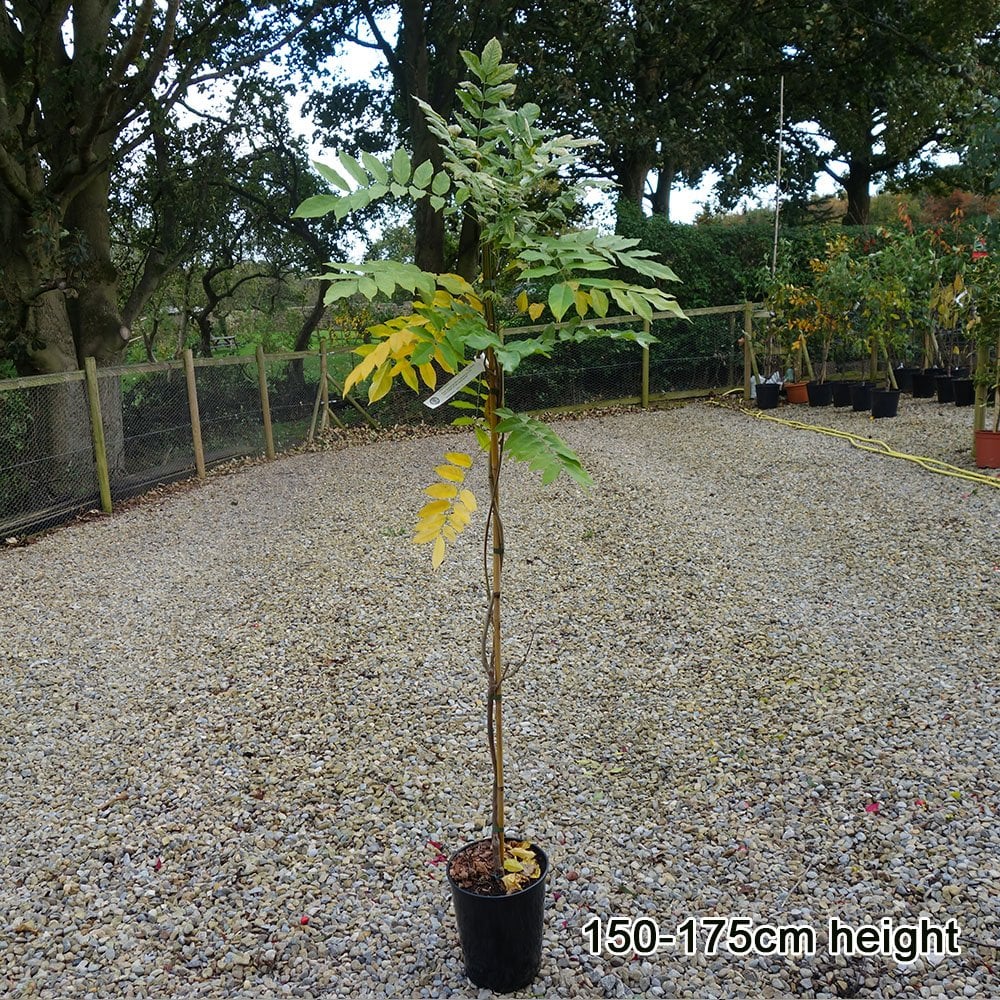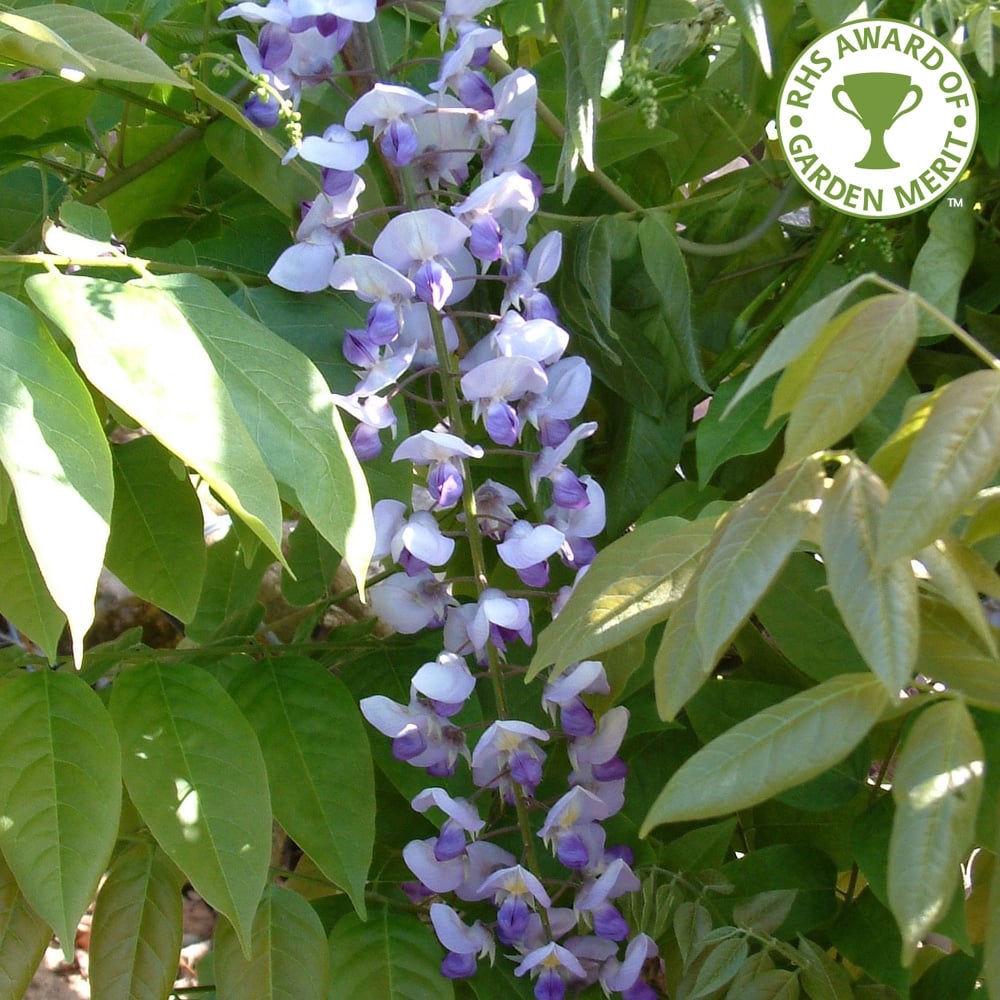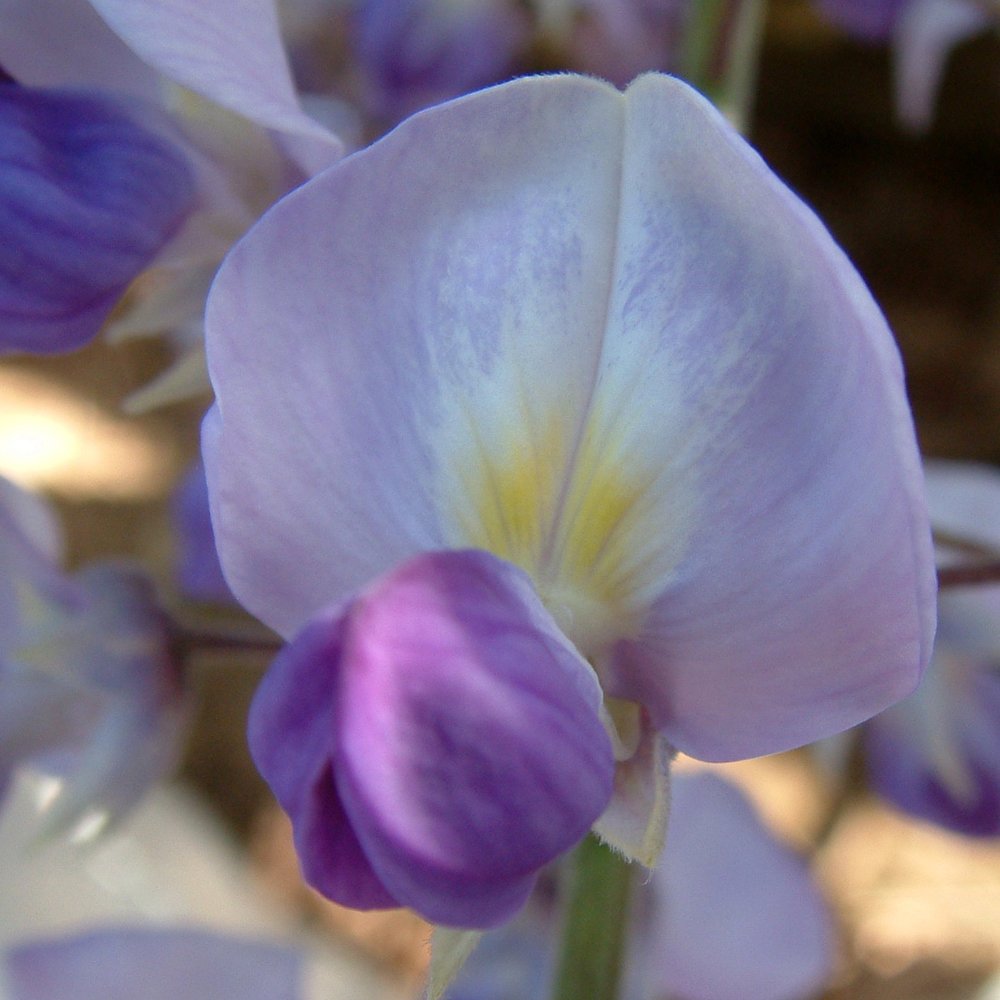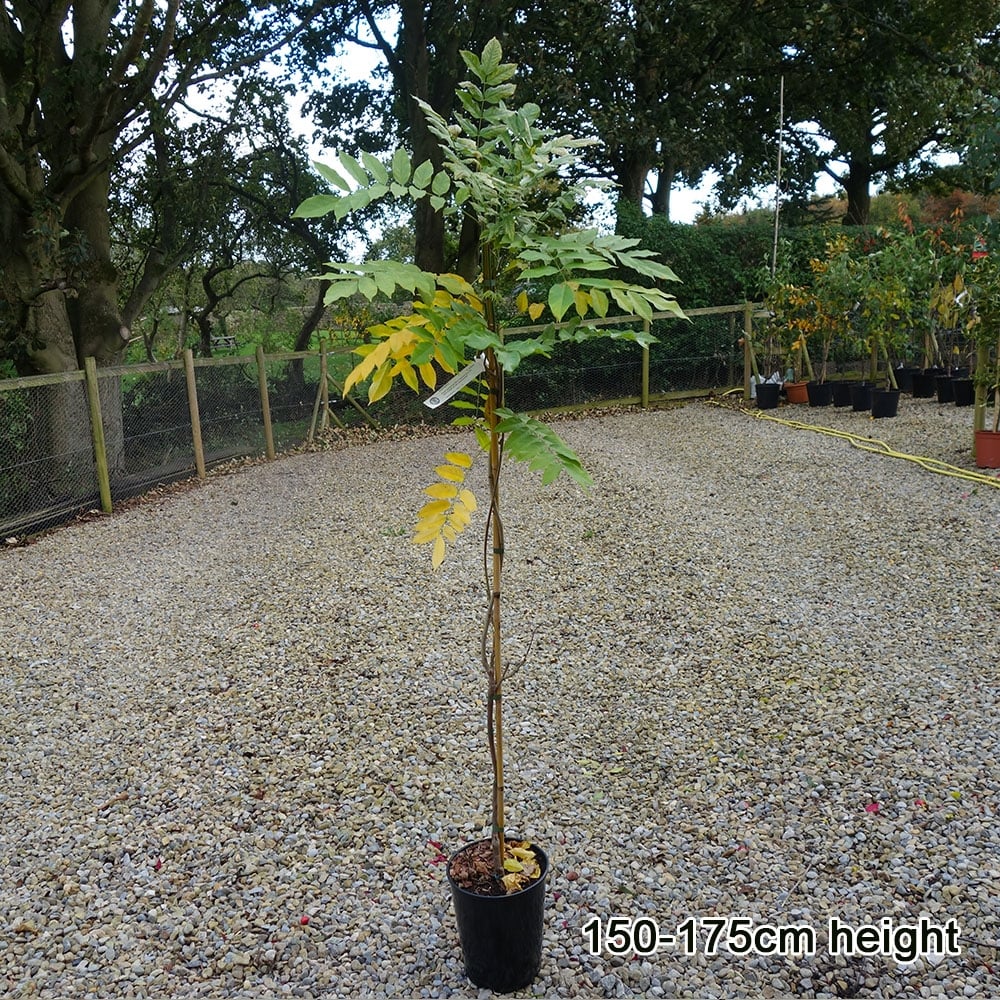Wisteria floribunda 'Burford' Tree
Wisteria floribunda 'Burford' Tree
Japanese Blue Wisteria
Climber, 150-180cm, 7.5L pot
Despatched within 2-4 weeks




Key features





Description
Wisteria floribunda 'Burford' produces the most outstanding, 40cm long, drooping racemes of violet and soft purple-blue, pea-like flowers with yellow throats in May-June. The flowers are highly scented and popular with bees and other insects. Wisteria 'Burford' also has bright green foliage that emerges bronzed in spring and turns yellow in the autumn.
A climbing Wisteria plant, it will grow to 7 x 4 metres in 20 years and is ideal for growing over a pergola or against a sunny wall. Any free draining soil will suit and full or partial sun is ideal but shade will be tolerated. This Japanese Blue Wisteria is a lovely, twining plant that is popular with wildlife.
All our Wisteria are grafted (rather than cuttings) so ought to flower earlier.
AKA Burford Wisteria, Japanese Blue Wisteria, Blue Climbing Wisteria tree
| Small shrubs (1-3) | Young trees & 4+ small shrubs | Select semi-mature trees & shrubs (1-4) | All other mature trees (any quantity) | |
|---|---|---|---|---|
| Mainland UK ex. Scottish Highlands | £10 | £12 | £35 | from £55 |
| Scottish Highlands & the Islands | From £30 | |||
| Outside Mainland UK | Currently we are unable to deliver outside of Mainland UK | |||
Product Details
Key features





Description
Wisteria floribunda 'Burford' produces the most outstanding, 40cm long, drooping racemes of violet and soft purple-blue, pea-like flowers with yellow throats in May-June. The flowers are highly scented and popular with bees and other insects....
Wisteria floribunda 'Burford' produces the most outstanding, 40cm long, drooping racemes of violet and soft purple-blue, pea-like flowers with yellow throats in May-June. The flowers are highly scented and popular with bees and other insects. Wisteria 'Burford' also has bright green foliage that emerges bronzed in spring and turns yellow in the autumn.
A climbing Wisteria plant, it will grow to 7 x 4 metres in 20 years and is ideal for growing over a pergola or against a sunny wall. Any free draining soil will suit and full or partial sun is ideal but shade will be tolerated. This Japanese Blue Wisteria is a lovely, twining plant that is popular with wildlife.
All our Wisteria are grafted (rather than cuttings) so ought to flower earlier.
AKA Burford Wisteria, Japanese Blue Wisteria, Blue Climbing Wisteria tree
Planting & Care
Delivery Information
| Small shrubs (1-3) | Young trees & 4+ small shrubs | Select semi-mature trees & shrubs (1-4) | All other mature trees (any quantity) | |
|---|---|---|---|---|
| Mainland UK ex. Scottish Highlands | £10 | £12 | £35 | from £55 |
| Scottish Highlands & the Islands | From £30 | |||
| Outside Mainland UK | Currently we are unable to deliver outside of Mainland UK | |||
MORE TO GROW YOUR GARDEN

















